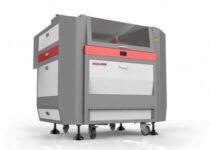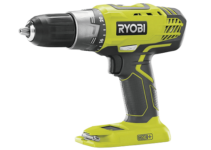EasyPress is a machine companion from Cricut and it presents you with the portability of iron and heat of a press. What this implies is that it can act like an iron and a press simultaneously. EasyPress 2 is an incredible machine because it is efficient, fast, and presents users with top quality.

To enjoy the best of this machine from Cricut, you need to have the right settings. This is what we will discuss in this post. Before then, let’s look at the anatomy of this interesting machine.
EasyPress 2 – Anatomy of the Machine
One look at this machine and you’d be captivated by its attractive design. However, it brings a lot more to the table than beauty. The two main components are the actual machine and the base. You can split these into other parts. Let’s look at each briefly.
Power button
This button helps you to switch on and off this machine. Usually, switching on the machine reverts it to the settings you last used before switching it off.
Temperature button
This button helps you to adjust the temperature of the device. You can make use of the + or – signs to define your temperature settings. If you want to switch between Celsius and Fahrenheit, simply hold the button down.
Timer button
This button is similar to the temperature button. You can adjust the timer by pressing + or – on the button.
Handle
This helps you to hold the device when in use to ease movement.
Heat plate
This part of the device is what heats it and transfer heat to clothes.
Electrical cord
This connects the device to the electric source.
EasyPress 2 – Best Heat Settings
In this section, we will look at the best heat settings of EasyPress 2. This device comes with a reference guide. If you misplace this guide, you can make use of the settings in the table below:
| Material | Lite, every day, Metallic (warm peel) | Glitter (warm peel) | Holographic (warm peel) | Foil (cool peel) | Sport-flex (warm peel) | Patterned (cool peel) |
| Burlap | 305o for 30 secs. | 305o for 30 secs. | 305o for 30 secs. | Not rec. | Not rec. | Not rec. |
| Cardstock | 280o for 30 secs. | 290o for 30 secs. | 290o for 30 secs. | 270o for 30 secs. | Not rec. | 290o for 30 secs. |
| Chipboard | 315o for 30 secs. | 315o for 30 secs. | 315o for 30 secs. | Not rec. | Not rec. | 315o for 30 secs. |
| Cotton/Poly blend | 315o for 30 secs. | 330o for 30 secs. | 330o for 30 secs. | 295o for 30 secs. | Not rec. | 340o for 30 secs. |
| Cotton Canvas | 340o for 30 secs. | 270o for 30 secs. | 285o for 30 secs. | 290o for 30 secs. | Not rec. | 340o for 30 secs. |
| Faux leather | 280o for 30 secs. | 270o for 30 secs. | 285o for 30 secs. | 280o for 30 secs. | Not rec. | 265o for 30 secs. |
| Felt | 280o for 30 secs. | 270o for 30 secs. | 285o for 30 secs. | 280o for 30 secs. | Not rec. | 265o for 30 secs. |
| Jersey mesh | 280o for 30 secs. | Not rec. | Not rec. | 280o for 30 secs. | Not rec. | Not rec. |
| Polyester | 315o for 30 secs. | 330o for 30 secs. | 330o for 30 secs. | 295o for 30 secs. | 305o for 30 secs. | Not rec. |
| Silk | 280o for 30 secs. | Not rec. | Not rec. | 255o for 30 secs. | Not rec. | Not rec. |
| Nylon | 280o for 30 secs. | Not rec. | Not rec. | 255o for 30 secs. | 305o for 30 secs. | Not rec. |
It is imperative to note that these settings are just a guide. You can always try a test-run to find out what works best for you.





